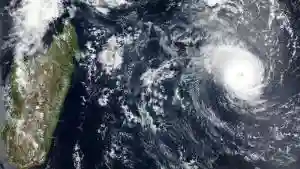Rains and winds hit parts of Mozambique on Saturday as Tropical Cyclone Freddy drew closer for the second time, according to the Mozambique National Meteorology Institute (INAM).
Freddy slowed its advance towards Mozambique and was 60 kilometres (40 miles) off the coast on Saturday morning.
INAM said cyclone Freddy reduced its speed from seven to four kph, thus delaying its entry.
Authorities added that heavy rains and very strong winds were affecting the central provinces of Zambezia, Manica and Sofala.
The cyclone was expected to make a second landfall in Mozambique later this weekend, after a first deadly hit in late February.
It was initially forecast to make landfall on Friday night.
Guy Taylor, a spokesman for the United Nations’ children agency UNICEF, told AFP from the seaport of Quelimane, in Zambezia, on Saturday that there was already quite a substantial flooding.
He added that rain and wind had been “on and off” as Cyclone Freddy cyclone inched closer to Mozambique.
On Friday, authorities said more than half a million people were at risk.
The storm was forecasted to drop up to 400 millimetres of rain over the next few days, more than twice the usual monthly rainfall.
According to the UN World Meteorological Organization (WMO), Freddy, which began life off northwestern Australia in the first week of February, was set to become the longest-lasting tropical cyclone on record.
It crossed the entire southern Indian Ocean and hit Madagascar on February 21, crossing the island before reaching Mozambique on February 24.
Following what meteorologists describe as a “rare” loop trajectory, Freddy then headed back towards Madagascar before moving once more towards Mozambique.
During the first visit, it destroyed, damaged or flooded more than 28 000 homes, affecting about 166 000 people.
In total, Freddy has so far killed at least 27 people (10 in Mozambique and 17 in Madagascar).

